Key Takeaways
- Asian lady beetles look like friendly ladybugs but invade homes seeking warmth in colder seasons.
- They rarely bite and aren’t dangerous, but can cause minor allergic reactions or irritations.
- Their biggest issue? Staining walls, carpets, and releasing a musty smell when crushed or stressed.
- Beneficial outdoors (goodbye, aphids!), but invasive enough to disrupt native species.
- Seal entry points, vacuum indoors carefully, and consider professional pest control for serious invasions.
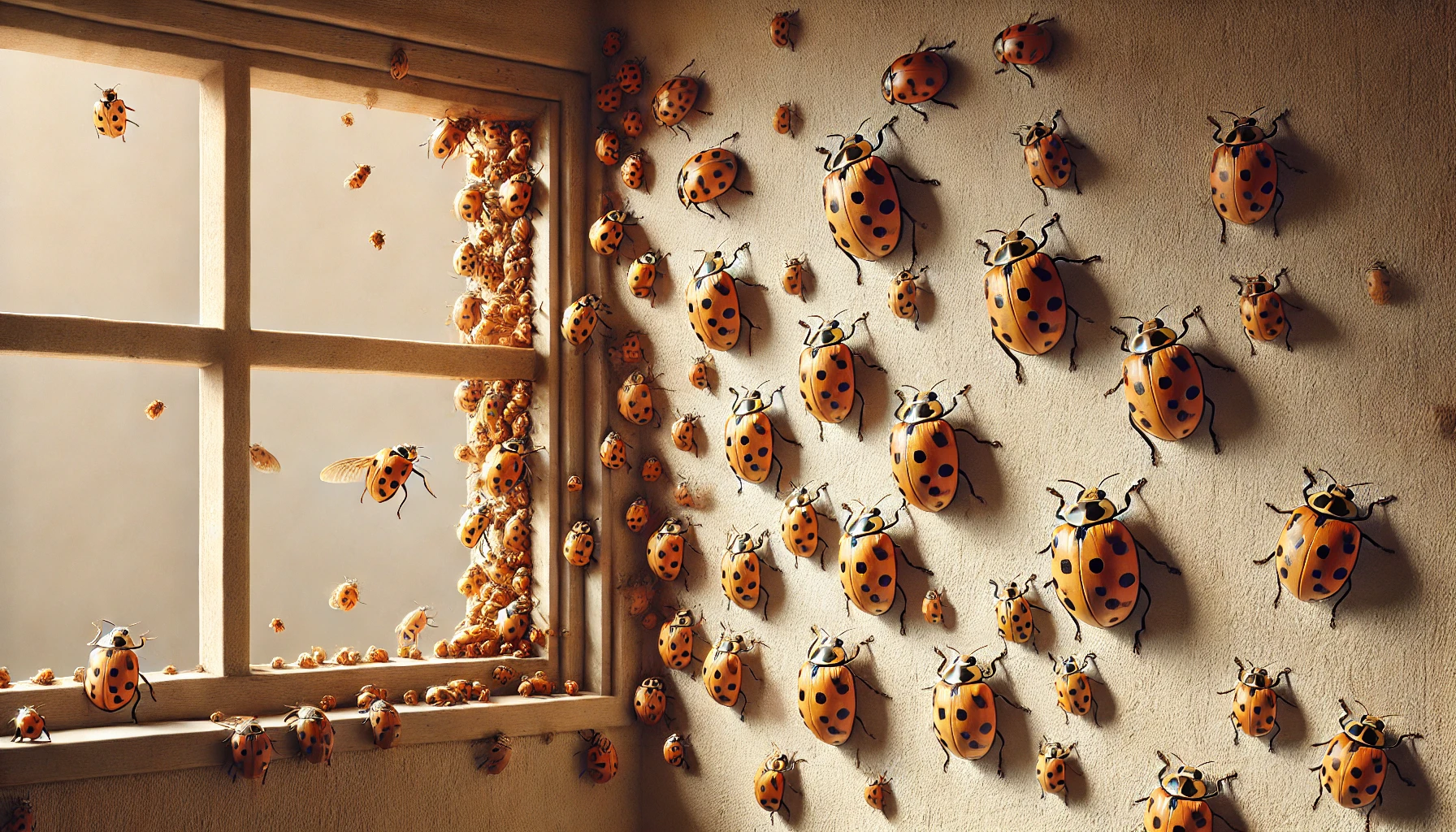 Have you ever had that moment when you glance at your window and see dozens of ladybugs huddled together, looking cute—but also creepy? You know what I’m talking about. You probably don’t see your typical ladybugs; they’re most likely Asian ladybeetles. And honestly, these little insects might make you wonder: “Are these things harmful, or are they just harmless intruders?”
Let’s clear things up right now. Asian lady beetles aren’t dangerous, but they’re not entirely innocent. Confused yet? Stick with me here.
Have you ever had that moment when you glance at your window and see dozens of ladybugs huddled together, looking cute—but also creepy? You know what I’m talking about. You probably don’t see your typical ladybugs; they’re most likely Asian ladybeetles. And honestly, these little insects might make you wonder: “Are these things harmful, or are they just harmless intruders?”
Let’s clear things up right now. Asian lady beetles aren’t dangerous, but they’re not entirely innocent. Confused yet? Stick with me here.
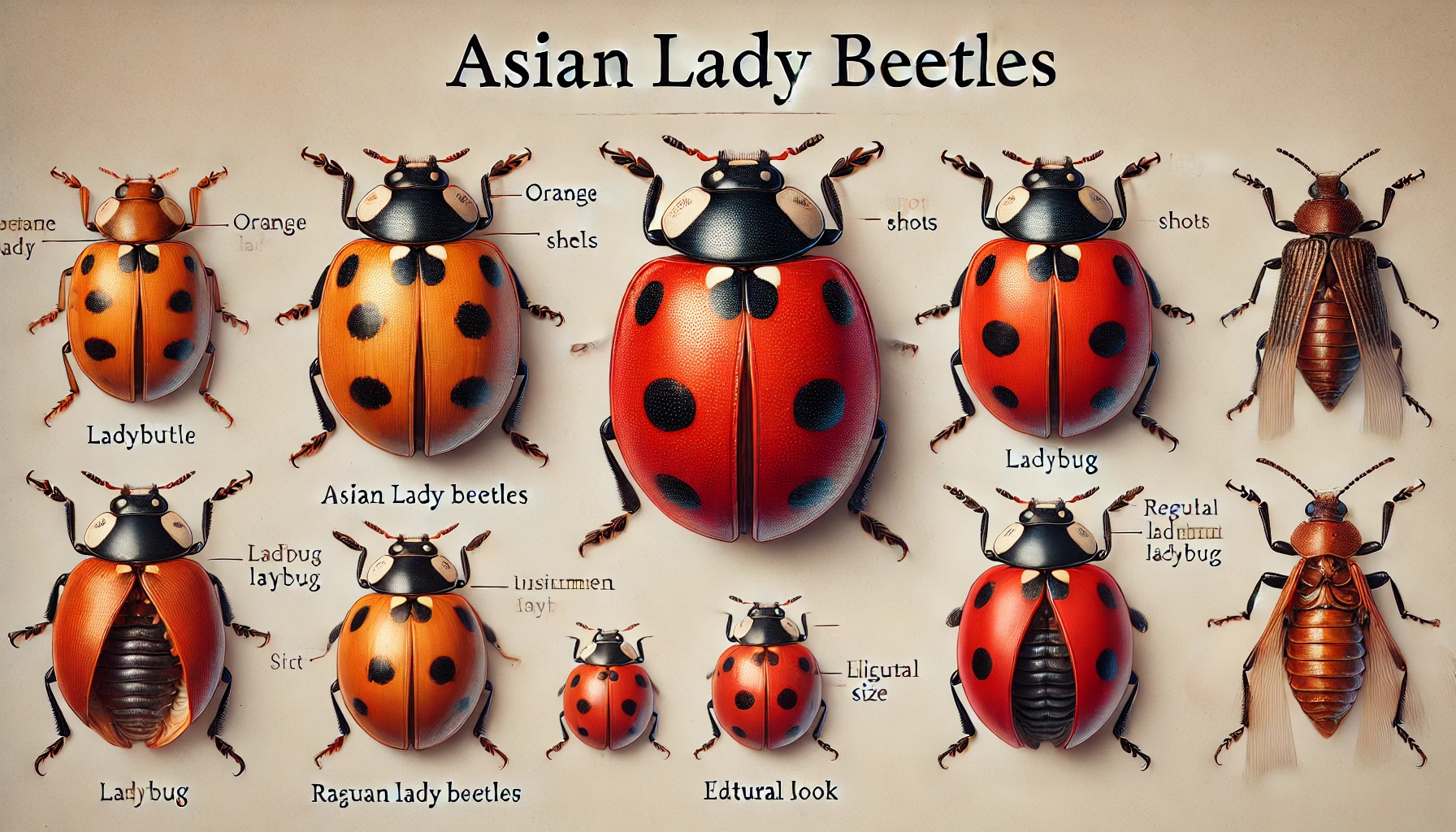

Not getting a solution?
Get your free pest control estimate today!First, What Exactly Are Asian Lady Beetles?
You might think they’re regular ladybugs, and honestly, who can blame you? They look incredibly similar. But here’s the thing: Asian lady beetles (Harmonia axyridis) have a few giveaways that set them apart. They range from pale orange to deep red, often with black spots. But—get this—they usually sport a noticeable black marking behind their head, kind of like an “M” or a wonky “W.” If you’re squinting right now at a beetle near your window trying to figure out if it has that little mark, chances are you’ve got yourself an Asian lady beetle visitor. Brought to the U.S. in the early 1900s to combat agricultural pests (aphids, mainly), they’ve thrived—maybe a bit too much. They’re all over the place, especially in fall and winter. But why exactly are they cozying up in your living room?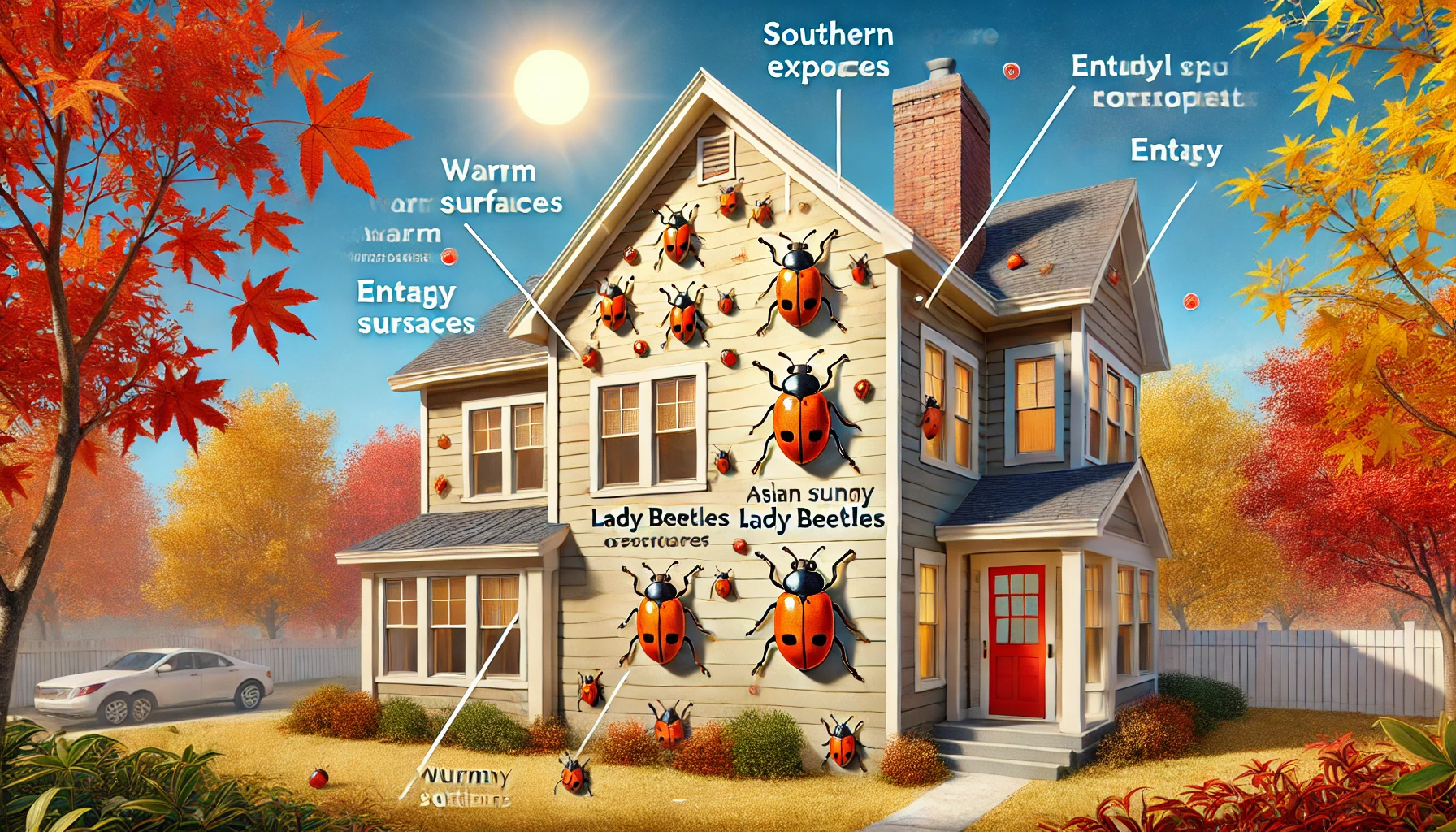
Why the Heck Are They in My House?
You’re not alone in wondering this. Asian lady beetles are notorious home invaders during cooler months. They’re just looking for somewhere warm to hang out—your house being their favorite winter Airbnb. They sneak in through tiny cracks, gaps around windows, doors, vents—any tiny opening you never even noticed. Once they’re comfy, they’ll settle down inside your walls, attics, or basements. On sunny winter days, you might even see swarms congregating on windows or walls, soaking in the warmth. Cozy for them; annoying for you.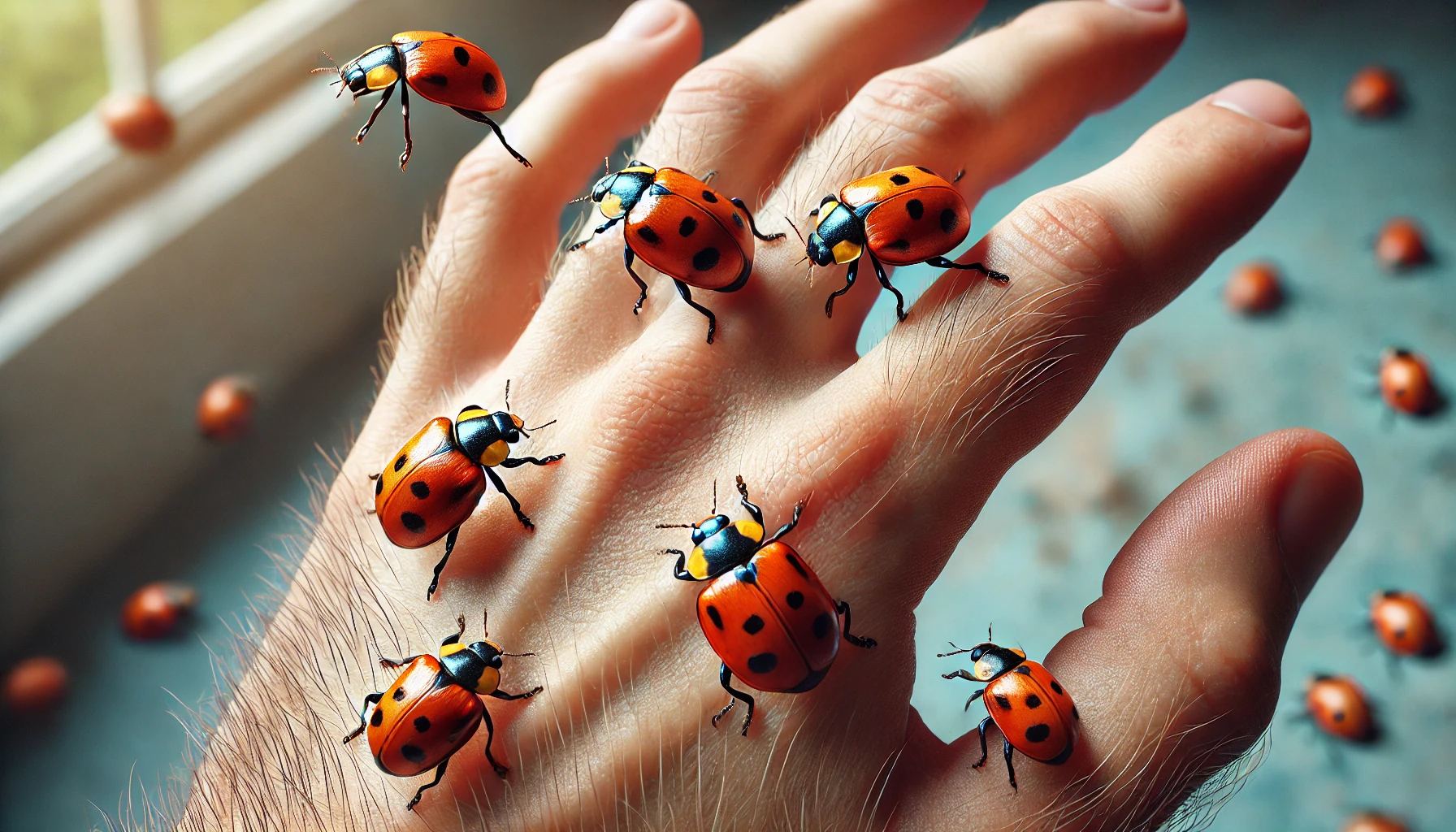
But Wait, Do They Bite?
You know what? Yes, they can bite—but it’s super rare. Usually, they bite when they’re accidentally squished or disturbed, and even then, it’s more of a pinch than an actual bite. Think tiny pinprick rather than bee sting. They’re not venomous and certainly not spreading diseases around your house. So, that’s the good news. However, it’s also true some folks—mainly those sensitive to allergies—might experience minor irritations. Why? Because these beetles have a weird little trick: they release a yellowish, foul-smelling fluid when stressed or crushed. Gross, I know. This fluid can irritate your eyes and skin or even cause mild breathing discomfort if you’re sensitive or asthmatic.
What About My Pets?
Honestly, your pets probably won’t be bothered by these beetles. Most cats or dogs simply aren’t interested—or they might sniff at them, sneeze, and move on. But—and it’s a rare but essential “but”—some overly curious pups may snack on a handful of beetles. Not exactly tasty, and worse, the beetles’ bitter secretion can irritate their mouths, causing drooling or even mild vomiting. If you ever suspect this, a quick call or visit to the vet is best. But, again, this is pretty uncommon. Most pets steer clear naturally.The Real Problem: They’re Messy
Dangerous? Nope. Annoying? Oh, you bet. Their biggest “crime” is being seriously messy houseguests. Remember that smelly fluid I mentioned earlier? It’s not just irritating—it’s staining. Beetles getting squashed against your walls or carpets can leave yellowish stains. Imagine mustard-colored polka dots on your nice white walls. Not exactly the trendy aesthetic you were going for. They also smell bad in more significant numbers. Think musty, unpleasant odor—not terrible, but noticeable. And sometimes, dead beetles inside your walls or around windows might even attract other pests, like spiders looking for an easy snack. Suddenly, a small beetle problem turns into a slightly bigger pest issue. Not ideal.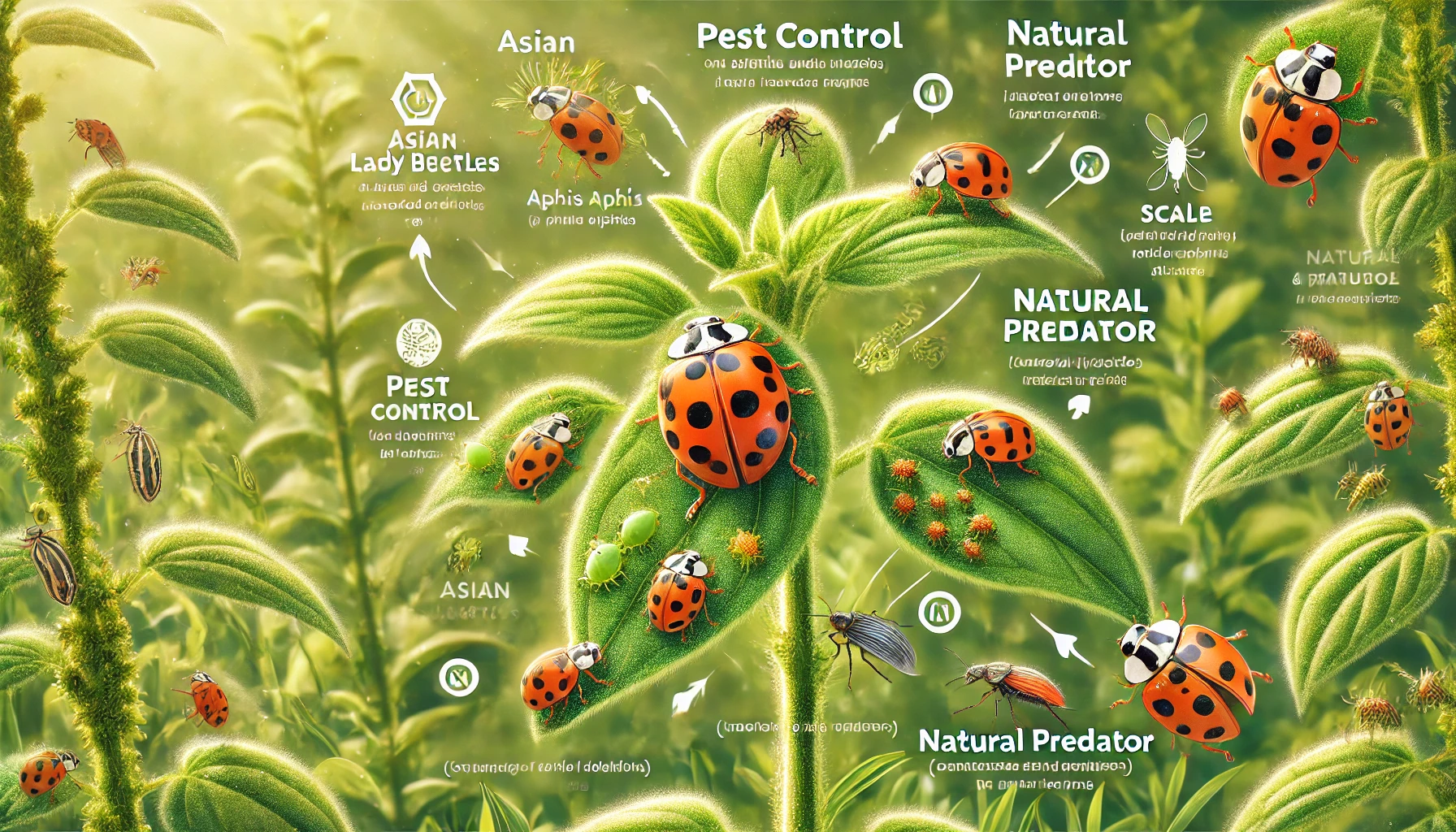
Are They Good for Anything?
Here’s a twist: despite their indoor antics, Asian lady beetles are heroes in the garden. They gobble up aphids and other pests, reducing the need for pesticides. So, outdoors, they’re beneficial bugs. But, of course, there’s a catch (isn’t there always?). They’re invasive, and as much as they help control pests, they also tend to bully native ladybug populations—sometimes even feeding on their eggs and larvae. So yeah, they’re good, but they might be a bit too good at their job.How to Keep These Uninvited Guests Out
- You might think, “Okay, enough about the beetles—how do I get rid of them?” Let’s talk prevention.
-
Seal It Up: Use caulk or weather stripping to close gaps around windows, doors, and vents—especially before fall hits.
-
Screen Time: Check all screens for tears or gaps. Repairing attic or window screens helps block beetles from sneaking in.
-
Exterior Sprays: Skip heavy pesticides unless needed—professional pest control is a safer, more effective option for large infestations.

When to Get Professional Help
Let’s be honest. Most Asian lady beetle problems are manageable DIY-style. But if you’re vacuuming beetles more than dust or they’re driving you crazy every winter, it’s probably time to call in a pro. Pest control experts can treat your home safely and effectively, keeping future beetle hotel stays short-lived. And honestly, a little professional help can sometimes make life a lot easier. If you feel things have gone out of control, it is advised to contact pest control professionals. Our team can provide a customized approach to protect your home effectively.Visit our Species, Control, and DIY Guide sections for additional resources on beetles and ways to tackle a beetles infestation.





